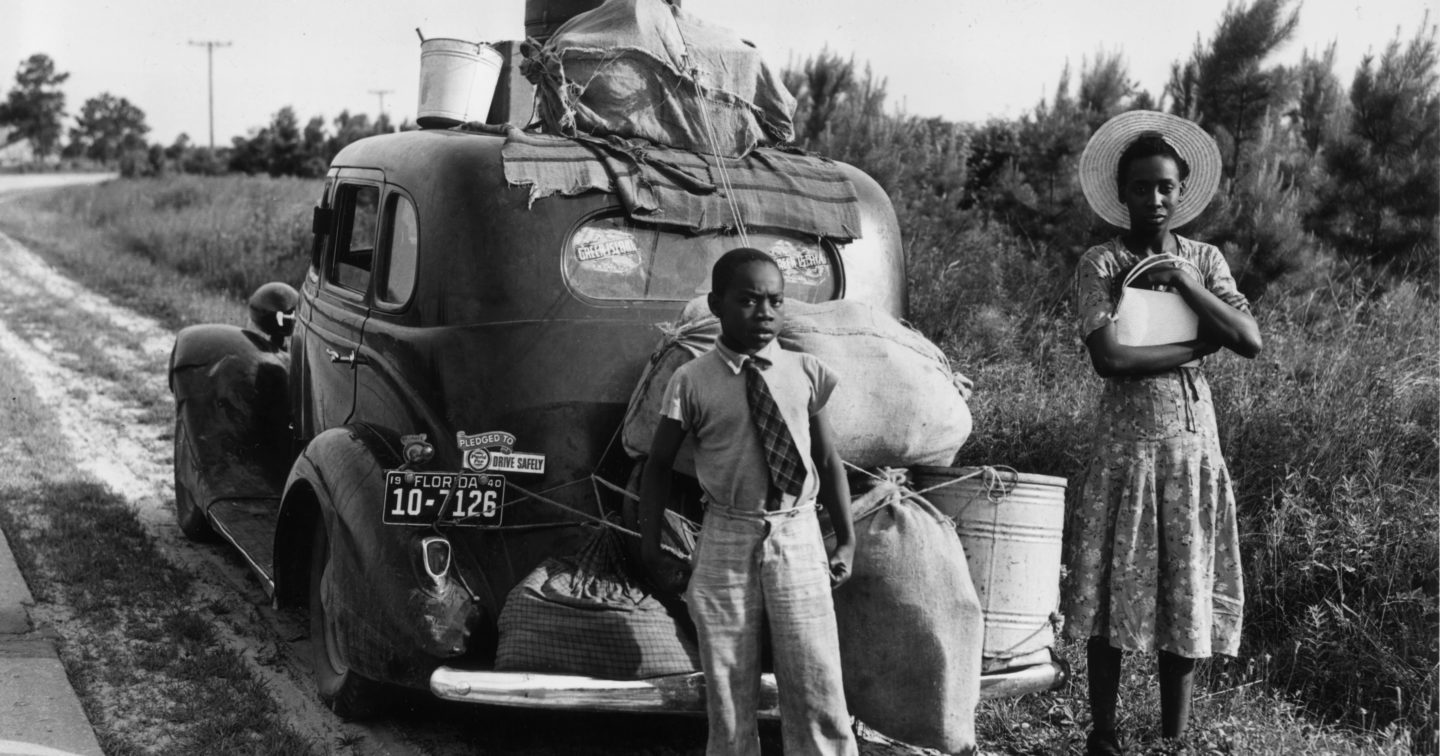THE NATION CLASSROOM
American History as It Happened
RACE RELATIONS and CIVIL RIGHTS
MODULE THREE: 1900-1918

PERIOD SUMMARY: In 1900, ninety percent of African-Americans, nearly eight million people, lived in the the rural South. Across that region, increasingly harsh Jim Crow laws segregated African-Americans from whites and restricted them to inferior facilities in public spaces, educational institutions, and modes of transport. During this period, most southern states took active steps to disfranchise black voters, curtailing their right to vote through grandfather clauses, poll taxes, and literacy tests.
By 1920, due to the upheaval known as “The Great Migration,” over half a million African-Americans had left the South for what they hoped would be greater opportunity in the industrial North and Western states. There, however, blacks found themselves in competition with millions of recently arrived white immigrants for housing and jobs. These colliding migrations led to increased racial tension and outbreaks of violence. At the same time, during the Great Migration, African-Americans began to build a new place in public life, actively confronting racial prejudice as well as economic, political and social challenges to create a black urban culture that would exert enormous influence in the decades to come.
In 1912, Woodrow Wilson won the presidency of the US—the first southerner elected president since 1848. Despite initial hopes that Wilson would support black advancement, in his eight years in office, Wilson oversaw segregation of the federal government and supported numerous anti-black measures.
The most famous African-American of the time was Booker T. Washington. Born into slavery in Virginia in 1856, Washington became a successful educator, best-selling author, and acclaimed orator. Though his stature and achievements were undeniable, Washington’s strategies—frequently seeking compromise and accommodation with white society—led many African-American leaders to disdain him, especially for his reluctance to speak out for black civil rights. One of his most prominent critics was author and activist W.E.B. DuBois with whom he staged numerous debates over the best path for black advancement in the US.
Despite the bleakness of the era—with numerous race riots across the US and more than 1,000 lynchings between 1900 and 1920—there was progress: Growing numbers of African-Americans became literate, found work and prospered. And in 1909, a group of black and white leaders founded an organization that was to be crucial in the civil rights battles to come—the National Association for the Advancement of Colored People (NAACP).
Below you’ll find excerpts from selected articles about this era that ran in The Nation during that time.
The DBQ (document-based question) about this set of excerpts is: More than four decades after the Civil War ended, African-Americans struggled as they encountered obstacles to their advancement. Using the documents below and your knowledge of outside events, describe at least three of those obstacles and assess how serious a threat they were to African-American success.
AS YOU READ: THINGS TO LOOK FOR
- Examine each excerpt for point of view. Is the document a report, a review, an editorial? Identify how the format and/or writer’s purpose affects the content.
- Keep in mind when the excerpts were published. Was anything significant happening at the time? If so, how might those events have affected what was being written?
- Search for themes across the documents. Do issues recur at different times during this period? If so, do the issues change over time?
- Evaluate the importance of each issue being explored. What are the key effects of the issue? How significant was it in the overall picture?
VOCABULARY
bogey
disfranchising laws
East St. Louis riots of 1917
grandfather clauses
Jim Crow
John Brown
Springfield riot of 1908
Tuskegee

